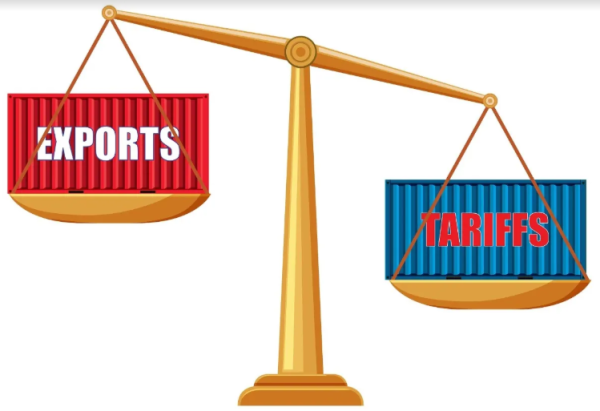The Weakest Links of Supply Chains
Semiconductors are experiencing a major shortage due to supply chain failures. Credit: Victor Moussa/Shutterstock
November 5, 2021
Supply chains are a logistical marvel of the modern world, and one that cannot be overlooked. They can be defined as the list of steps it takes for different industries to communicate and transport resources on a global scale in order to turn raw materials into manufactured goods for consumers to use. They are what allows a company to take natural resources from Mexico, create components in Vietnam, assemble the device in China and ship it to people all over the world, thousands of times a day, and they are essential to the global economy.
Yet supply chains are not just an accepted and unchanging truth of the world. They are human systems, and as such, they are just as fallible as their creators. And nothing has demonstrated their weaknesses better than a certain virus that’s been on the headlines for the last fifteen months!
As an example of how supply chains used to function, imagine the year 2019. It’s a cool autumn day, not a face mask in sight, and you’ve just obtained a new iPhone. The product you’re now using is obviously an Apple product, but it contains a myriad of components that Apple did not manufacture. Instead, Apple bought them from more than a hundred different suppliers, many of which are located in China and Taiwan. Those manufacturers, in turn, created the components using raw materials from all over the world.
Apple is known for its efficient supply chain, which it maintains by keeping its suppliers few in number (to maintain better relationships with suppliers and to regulate the quality of their products) and by keeping their inventory low (to reduce the costs associated with storing their products for too long). This efficiency gives it a major advantage in the complex supply chain of semiconductors and electronics.
This all changed when, in the course of just a few months, the global economy underwent a radical shift in early 2020. As demand decreased in the pandemic, businesses were left with unsold inventories, forcing them to liquidate their assets. Businesses scaled their operations down and even shut down entirely; the supply chains came to a halt, and products were simply not moving quickly enough.
Now, however, a new problem is being posed to companies: new jobs are being created, the economy is reopening, demand is increasing, and businesses have such low inventories that a number of shortages are appearing. Most importantly to Apple, a widespread shortage of semiconductors has appeared.
Just as the temporary stoppage of traffic on a busy road will cause a metaphorical shockwave to ripple backwards through the flow of traffic, causing cars to still be slowed down minutes after the disruption has ended, businesses cannot recover instantaneously when a crisis is dying down. Apple’s suppliers cannot instantly return to pre-pandemic productivity level and replenish Apple’s inventory, especially since they have experienced other disasters; the winter storms in Texas, along with a fire in a Japanese factory, have exacerbated the shortages. The transportation industry, an essential component of any supply chain, also needs to recover from the pandemic.
Apple lost about $6 billion in revenue for Q4 (in Apple’s case, July-September). But the effects stretch beyond smartphone companies; according to Bindiya Vakil and Tom Linton of the Harvard Business Review, “[t]he chip shortages are expected to cause widespread shortages of everything, from electronics to medical devices to technology and networking equipment.” Automobile companies such as Ford, Toyota, Nissan, and VW have all scaled their operations down as well.
Keep in mind that the semiconductor shortage is only one branch of the global supply chain failures; Business Insider referred to the situation as an “everything shortage” in a recent article. For consumers, this means rising prices, especially as demand peaks during the holiday season.
In response to the shortages, the Biden-Harris Administration issued Executive Order 14017, which identified four crucial supply chains in which to eliminate vulnerabilities: the supply chains of semiconductors, large capacity batteries, critical minerals (such as rare earths and graphite), and pharmaceutical ingredients. In June, the Administration created the Supply Chain Disruption Task Force to address the challenges that relate to repairing supply chains and rebuilding the economy.










